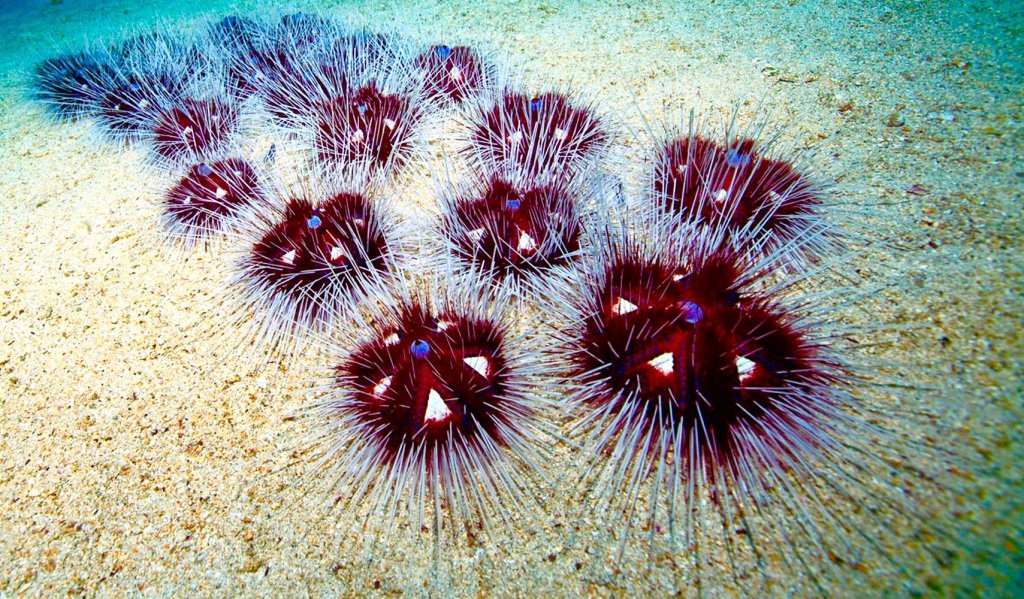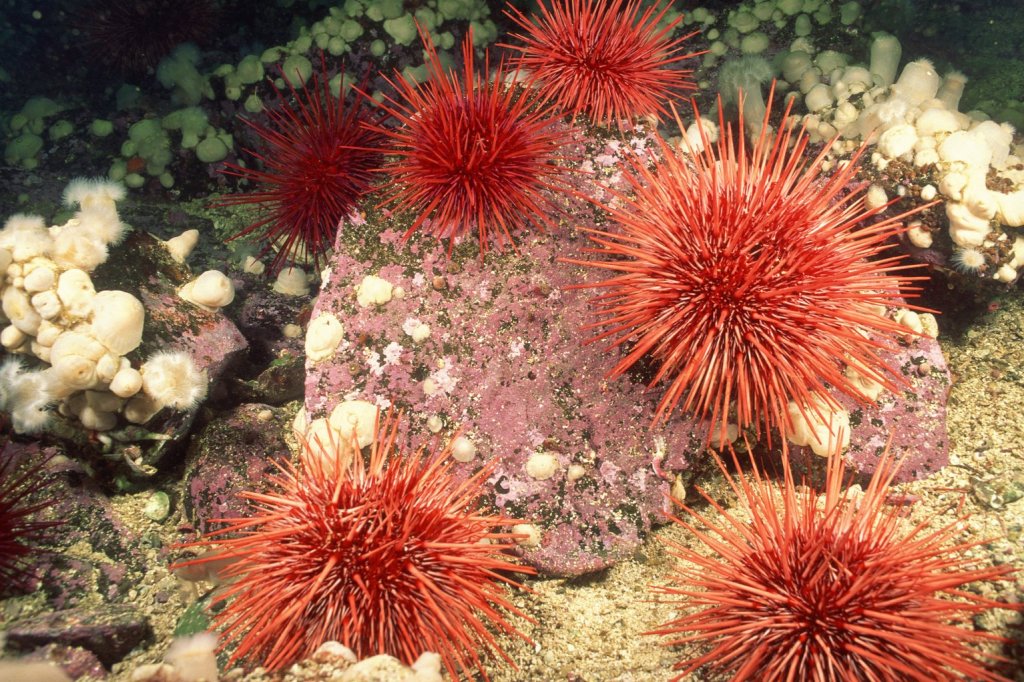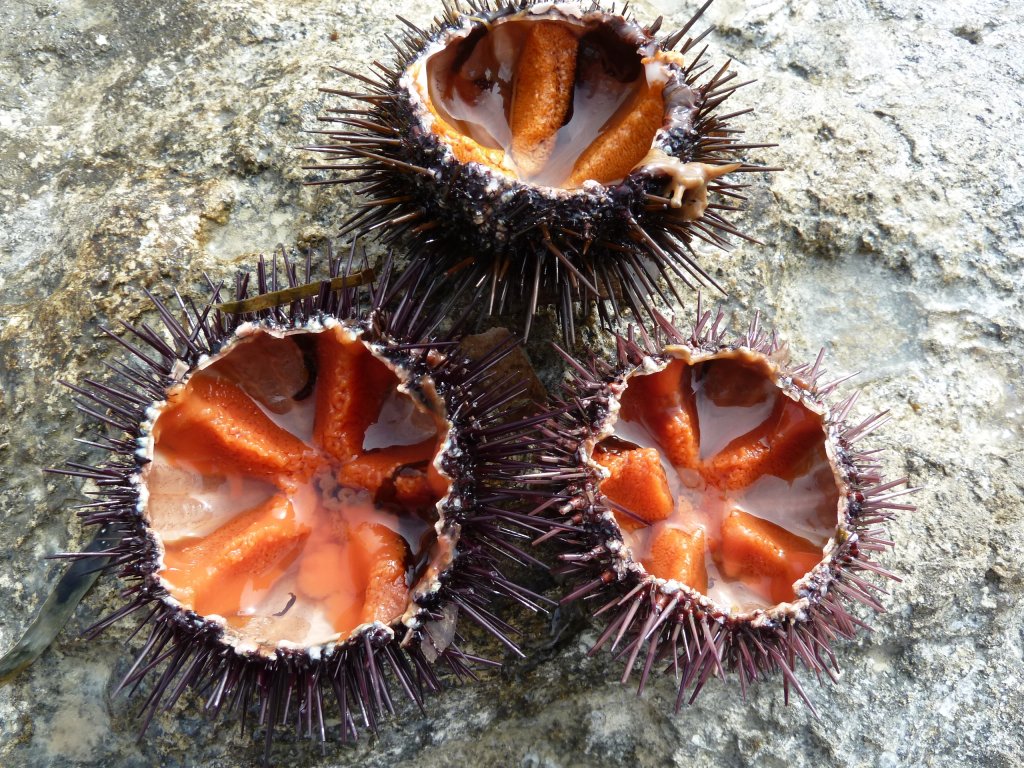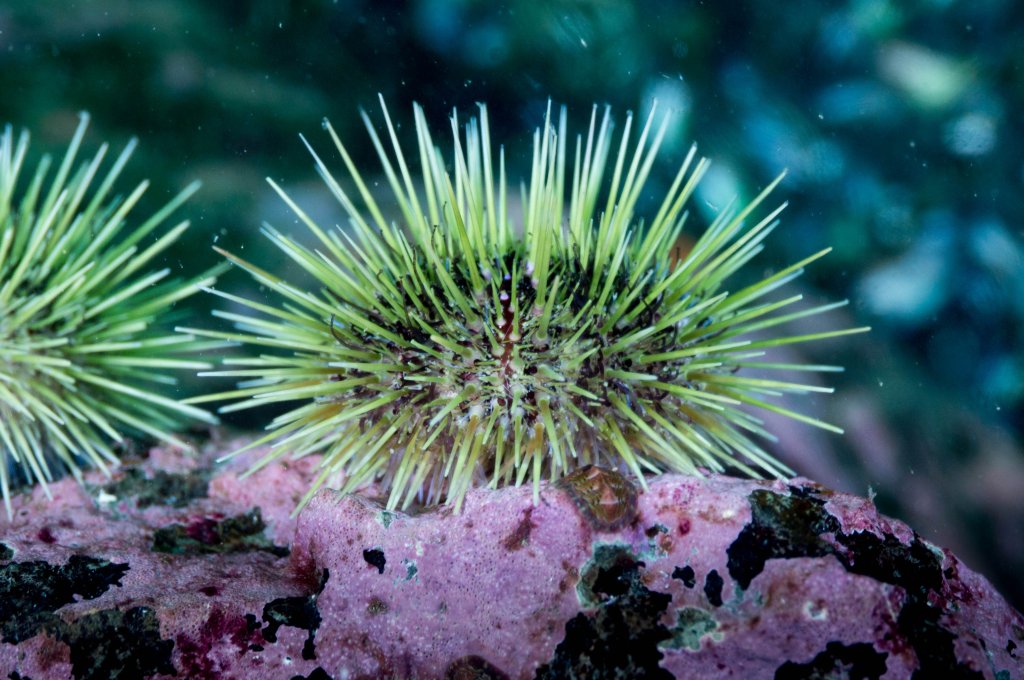Nature is home to mysterious and incredible creatures from each other. In the underwater world, the number of these incredible creatures is quite a lot. The sea urchin, which can live in all the oceans and seas of the world, is one of them. These fascinating creatures are very important for the underwater ecosystem. Unfortunately, however, their number is decreasing every day for various reasons. Even some species of sea urchin are in danger of extinction. Nevertheless, more than 200 species of sea urchin live in nature. Moreover, new species of sea urchin are still being discovered today. So if things go well, these incredible creatures with an unusual appearance and an interesting life cycle can maintain their important position in the underwater ecosystem. Here are 9 incredible facts you need to know about sea urchin…

- The largest among the types of sea urchin: Red sea urchin Decapitated
Many types of sea urchin grow up to a maximum of 5 centimeters in length. However, the length of the red sea urchin can grow up to 10 centimeters. Thus, it holds the title of the largest living creature among the sea urchin species Dec. In addition, these creatures mostly live in the northern part of the Pacific Ocean and Alaska.
- Sea urchins have no bones in their bodies

The bodies of sea urchins have a hard shell-like structure consisting of calcium carbonate. In addition, almost all sea urchin species have spines that help protect them from underwater predators.
- The sea urchin named Toxopneustes pileolus is one of the most dangerous creatures in the world
This creature, also known by the name of flower sea urchin, is a poisonous species that can easily kill a person. The flower-shaped spines of this dangerous creature cause the poison to be transferred to other creatures. When this poison, which is quite dangerous, enters the bloodstream of any living thing, it causes blood cells to clot and November muscle spasm. In the subsequent process, the poison can cause anaphylactic shock, convulsions and eventually death.
- Clownfish may develop immunity to flower sea urchin’s venom

Even consciously! Clown fish roam near this dangerous sea urchin and allow a small amount of poison to enter its body. He repeats this process several times. Thus, it develops immunity against the deadly poison of the sea urchin. Of course, there is a reason for this dangerous game. Parasites living on the flower Decoction are among the most important food sources of clown fish.
- Sea urchins are the favorite snack of many underwater creatures
Even their dangerous thorns and deadly poisons cannot protect these creatures from some dangers! Crabs, eels, many of the big fish in the oceans and even some bird species find sea urchins quite tasty. People in some geographies also enjoy consuming sea urchin very much. But the human threat and overfishing are causing some species to face extinction.
- A species of sea urchin was discovered thanks to Internet shopping
A marine biologist named Simon Coppard came across a rather unusual product sale on the eBay website in 2006. The product sold by a seashell seller was actually a previously unknown type of sea urchin! Moreover, the seller had been selling this undiscovered species since 2014. The studies carried out after the biologist noticed this interesting situation led to the identification of this new species. Discovered thanks to an Internet trade, this creature was named Coelopleurus exquisitus because of its bright and showy colors.
- These underwater creatures have five teeth

These unusual creatures of the oceans and seas can feed on both animal and plant foods. For this reason, they have teeth that cannot be easily noticed from the outside. Each of the 5 teeth located in the center of their body has its own jaw! Thus, each of these teeth can move extremely easily and separately. In addition, the teeth of sea urchins are also composed of calcium carbonate, just like their bodies.
- They also have hundreds of feet
These small feet, called pe Decellariae, are located between the spines. It allows the sea urchin to stand still or move on the ocean surface. Along with this, it also helps to catch various prey. In addition, this interesting organ also functions as a kind of defense mechanism. These organs, which help the sea urchin’s body to stay clean, are constantly in motion.Jul.
- Sea urchins can live for 200 years in the wild
Especially the red sea urchin. However, many other species are also known to live in the wild for more than 30 years. However, sea urchins grown in captivity have a life expectancy of less than 30 years. Pollution, overfishing and the destruction of their habitats reduce the chances of survival of these interesting creatures in nature.
0 Comments